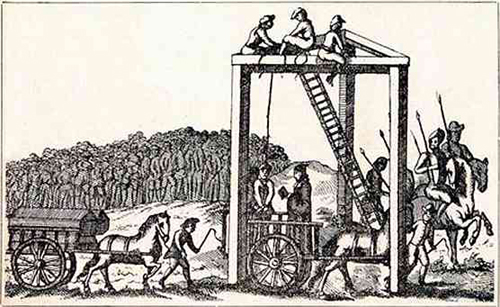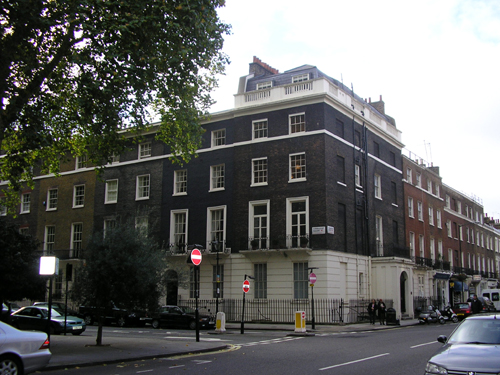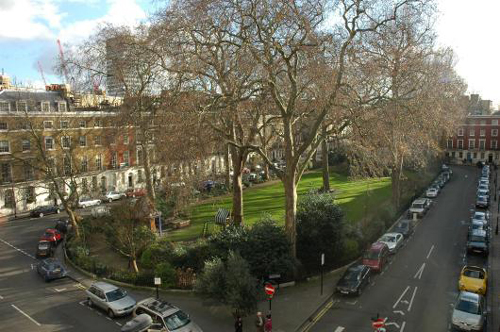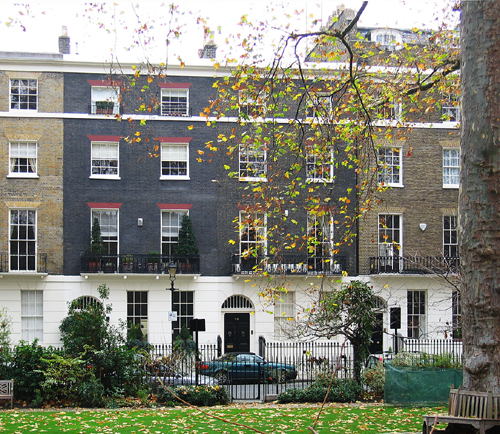This area of Hyde Park has remained in the hands of the church since the medieval period and originally covered around 500 acres, including the entire area from Marble Arch to Lancaster Gate and north to the Paddington Canal. The area near today’s Marble Arch, was formerly known as Tyburnia due to its association with the infamous ‘Tyburn Tree’ or Tyburn gallows, the main public execution site from 1388 to 1783, which formerly stood close to the junction between the Edgware and Bayswater Roads. The name ‘Tyburn’ originates from the river Tyburn that used to run from Hampstead through Marylebone to Oxford Street and south to the Thames.

By the late 18th century there were very few buildings across the Hyde Park Estate and it was only in 1795, when the Bishop of London obtained powers to grant building leases that large-scale building could begin. He commissioned estate surveyor, Samuel Pepys Cockerell, to create a plan for the estate, with Connaught Square one of the earliest sections to be erected. The name ‘Connaught’ originated from George III’s nephew and son-in-law, Prince William Frederick, who in 1805 succeeded as Duke of Gloucester and Edinburgh and Earl of Connaught.

Connaught Square was the first square built across the Hyde Park Estate, laid out for building in 1821 and most houses completed by 1828 by architect Thomas Allason. The architecture in Connaught Square is typical of the house style in the late Georgian period and the buildings have altered very little externally since they were built almost 200 years ago.1

The houses are built of brown brick with channelled stucco ground floors and concealed slate roofs. They consist of 4 storeys and basements with 2 and 3-window wide fronts. The end and central three houses are slightly advanced. They have semicircular arched doorways with panelled doors in pilastered jambs with consoles to the doorheads and fanlights above. The windows contain recessed glazing bar sashes under flat gauged arches. There is a stucco plat band2 over the ground floor and at 3rd floor level with crowning cornice and blocking course. The geometric patterned cast iron balconies to the 1st floor are particularly fine. The area railings are of cast iron with spear heads and urn finials.

Connaught Square has had many well known residents including Richard Branson whose first business venture was conducted in a run down basement flat. Other names include Michael Heseltine, Jonathan Aitken and No. 1 once belonged to Victor Lownes, the owner of the Playboy Club. In October 2004, No. 29 was purchased by Tony Blair and Cherie Booth for a reported £3.5m.
I was asked to carry out an analysis of the paint in three areas of one of the houses. It was interesting to see that the joinery was grained in imitation of wood for the whole of the 19th century, with dark colours being employed until the mid-1930s and then off-whites for the last eighty years or so. It could also be seen that major work had been undertaken in the 1960s and that much evidence of previous decoration had been removed at that time. An earlier refurbishment at the turn of the 19th/20th centuries had seen the introduction of Adamesque motifs in papier-mâché.
Notes
1 Taken from Melanie Backe-Hansen “Gallows, solicitors…and a Prime Minister: The history of Connaught Square.” 22nd March 2011.
2 A flat projecting horizontal strip of masonry or brickwork across the face of a building, as distinct from a moulded string.
View Larger Map












No comments yet. Be the first!